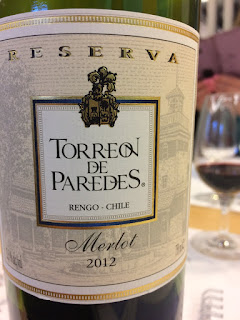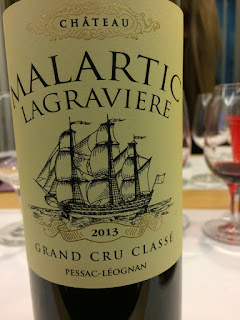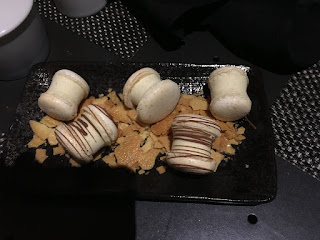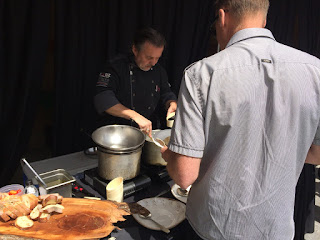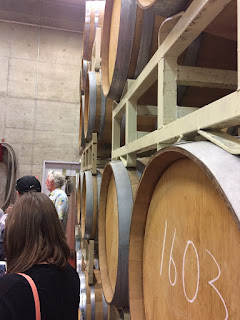At least, that's my story, and I'm sticking to it.
Sigh....
Tonight's fiasco was the Grenache tasting. We were given two wines to blind taste - one a cheaper Grenache from Spain and the other a Chateauneuf du Pape. Several years ago, I was in Chateauneuf du Pape for the wine festival (Fete de la Véraison) and tried many, many different wines from the region. I kind of considered myself a bit of an expert on these wines - until tonight.
The first wine we tried was medium ruby with a medium intensity on the nose. There were aromas of plum, cherry and jam and additional tastes of berry, plum and tobacco. The tannins were low, the acidity was medium with medium body. I thought it had a medium finish but it was actually a medium minus finish. I thought it was the Chateauneuf du Pape but it was actually a Besso de Vino Garnacha from Spain rated Good which cost a pricey $14. Ouch!
The second was medium ruby, and had a medium plus intensity on the nose (yet, I thought it was low intensity). I had a hard time noticing anything beyond red fruit on the nose but there was actually dark cherries, plum, herbaceous, and leather. I thought it tasted a bit thin or watery but I was wrong there as well - it had medium tannins, medium plus acidity and full body. I thought it had a short finish but, in fact, it had a medium plus finish and was rated Very Good. It was a 2013 Domaine Giraud Chateauneuf du Pape that was worth $90!
The person in our group that reported out to the class nailed it perfectly - she could tell which was which. I, on the other hadn't, had it completely wrong! I guess I have to go back to Chateauneuf du Pape for another wine festival!
The final two wines were both made from the Syrah grape (called Shiraz in Australia) and I redeemed myself a bit - if only to myself.
The first was a beautiful ruby/purple deep coloured wine that had a medium intensity on the nose and smelled of leather, tobacco, white pepper, and currants. On the palate there was black fruit (currants, cherry) and raisin. It had high acidity, high tannins and medium body. It had a medium finish but amazing complexity. This amazing wine (almost Exceptional) was 2011 John-Louis Chave Farconnet Hermitage from France that cost $100.
The second was deep purple with medium intensity with black fruit, black pepper and a bit of mint. It tasted of lots of dark, jammy fruit, had medium acidity, medium tannins, and full body. This Very Good wine was a Torbrec Shiraz from the Barossa Valley in Australia worth $40.
I was able to pick out the Hermitage - but both of these wines were certainly drinkable and good to have. The previous two, though, I don't know how I was so off base!
Now pass another piece of that humble pie....












